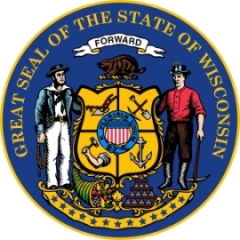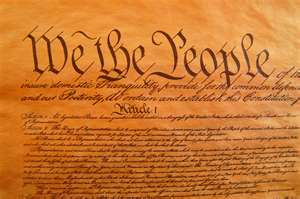Quirk in Major League Baseball Tiebreaker Rules Could Produce Surprise Post-Season Result
The addition of a second wild card team to the Major League Baseball playoffs, combined with an unusually large number of close division races, has created a blistering array of possibilities, even though there are, as I write this on Sunday morning, only four days left in the regular season.
The possibilities are greatest in the American League where eight teams are still in contention for the three division championships and the two wild card spots, and no team has clinched a place in the post-season. (In contrast, in the National League, four of the five post-season qualifiers have been established.)
Not only is it possible that all three American League Divisions could end with ties for first place, it is also possible that as many as four teams could end up tied for the two wild card positions.
On September 9, a seemingly endless list of rules pertaining to playoff tiebreakers was posted on Major League Baseball’s webpage, www.mlb.com (http://mlb.mlb.com/news/article.jsp?ymd=20120907&content_id=38029316&vkey=news_mlb_nd&c_id=mlb).
The term “playoff game” is a more narrow term in baseball than it is in other professional team sports. Major League Baseball uses the term “playoff games” to refer only to those extra games required to determine which teams qualify for “post-season” games like the League Championship Series and the World Series.
Moreover, it has long been the rule that “playoff games” count as part of the regular season, both in terms of player statistics and team won-lost records. However, post-season wins and losses and individual player statistics are compiled separately from those of the regular season.
For example, in 1959, the Los Angeles Dodgers and the Milwaukee Braves ended the regular season tied for first place in the National League with identical records of 86-68 (in a 154 game season). The Dodgers then won a best-two-of-three-game playoff by a margin of two games to none. Consequently, the Dodgers were officially credited with a final won-lost record of 88-68, and the Braves, 86-70. In addition, all pitching and batting performances in those two games were added into the players’ 1959 totals, although the statistics compiled by Dodger players during the subsequent World Series were not.
More recently, in 2007, the Colorado Rockies and the San Diego Padres tied for the then-one NL wild card spot with records of 89-73. The Rockies defeated the Padres, 9-8, in a one-game playoff, a victory which raised their regular season record to 90-73. In that game, Rockies left-fielder Matt Holiday went 2-6 with a triple and two rbi’s, which lowered his league-leading batting average from .3397 to .3396, but increased his league leading hit and rbi totals to 216 and 137, respectively. Holliday’s league-leading totals included statistics from the playoff game.
How the application of the “playoff games count as regular season games” might affect the tiebreaker system can be seen in the following example.
Assume that the Baltimore Orioles and the New York Yankees both drop their four remaining contests, while Tampa Bay wins its final four games. Assume also that Texas splits its Sunday double-header with the Angels and then takes two of three games in its regular-season-ending series with Oakland. Add to this the assumption that Oakland wins only one of its final four games, while the Angels win four of their five remaining contests.
Should the above events come to pass, the following would be the end-of-season standings in the American League:
EASTERN DIVISION
Baltimore 91-71
New York 91-71
Tampa Bay 91-71
CENTRAL DIVISION
Won by either Detroit or Chicago with no more than 90 wins
WESTERN DIVISION
Texas 95-67
Los Angeles 91-71
Oakland 91-71
So who goes to the playoffs? Obviously Texas and the winner of the Central Division are in. However, a playoff would have to be conducted to determine the winner of the Eastern Division before the wild card teams could be identified.
Under the rules posted at mlb.com, the championship of the Eastern Division would be determined by a two game playoff series with one team getting a first-round bye. The team with the best intra-division record, which would be Tampa Bay (which under the above scenario would finish Eastern Division play with a 42-30 record, compared to Baltimore’s 41-31 and New York’s 37-35), would then choose either to accept the first round bye and play the second game on the home field of the winner of the first game, or elect to host the first game (and the second, if it prevailed).
For this example, let’s assume that Tampa elects to take the bye. The first round game would then be played in Baltimore because it has a better intra-divisional record than New York. Let’s further assume that Baltimore wins the first game but loses the second to Tampa Bay.
At this point, we now have an Eastern Division Champion (Tampa Bay), but the three teams involved in that Eastern Division play-off series would have now played either one or two more regular season games than any of the other American League teams. Consequently, when we now move to determine the two teams with the best regular season records among the non-division winners, we have the following standings:
Los Angeles 91-71 .562
Oakland 91-71 .562
Baltimore 92-72 .561
New York 91-72 .558
If we apply another traditional rule — that winning percentage, not total victories, determines position in the standings — then Los Angeles and Oakland would be the two wild card teams, and the seasons of both New York and Baltimore would be over without any additional playoff games.
Is this the intended result? Is it fair? As far as I can tell, the posted rules do not address this issue, although presumably there is a document in the Commissioner’s Office that will eventually surface to provide an answer.
Interestingly enough, the tiebreaking rules posted on mlb.com cited above carry with them a curious disclaimer: “This story was not subject to the approval of Major League Baseball or its clubs.”
It is hard to believe that Major League Baseball does not control the content of its own website. More likely, the addition of a second wildcard has created such a bizarre, byzantine world of possibilities that MLB itself is not sure that it knows what the rules are, hence the disclaimer.


